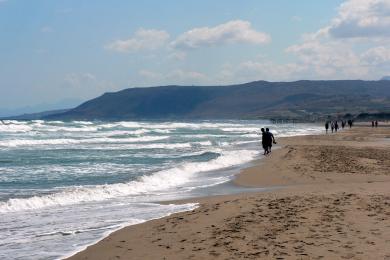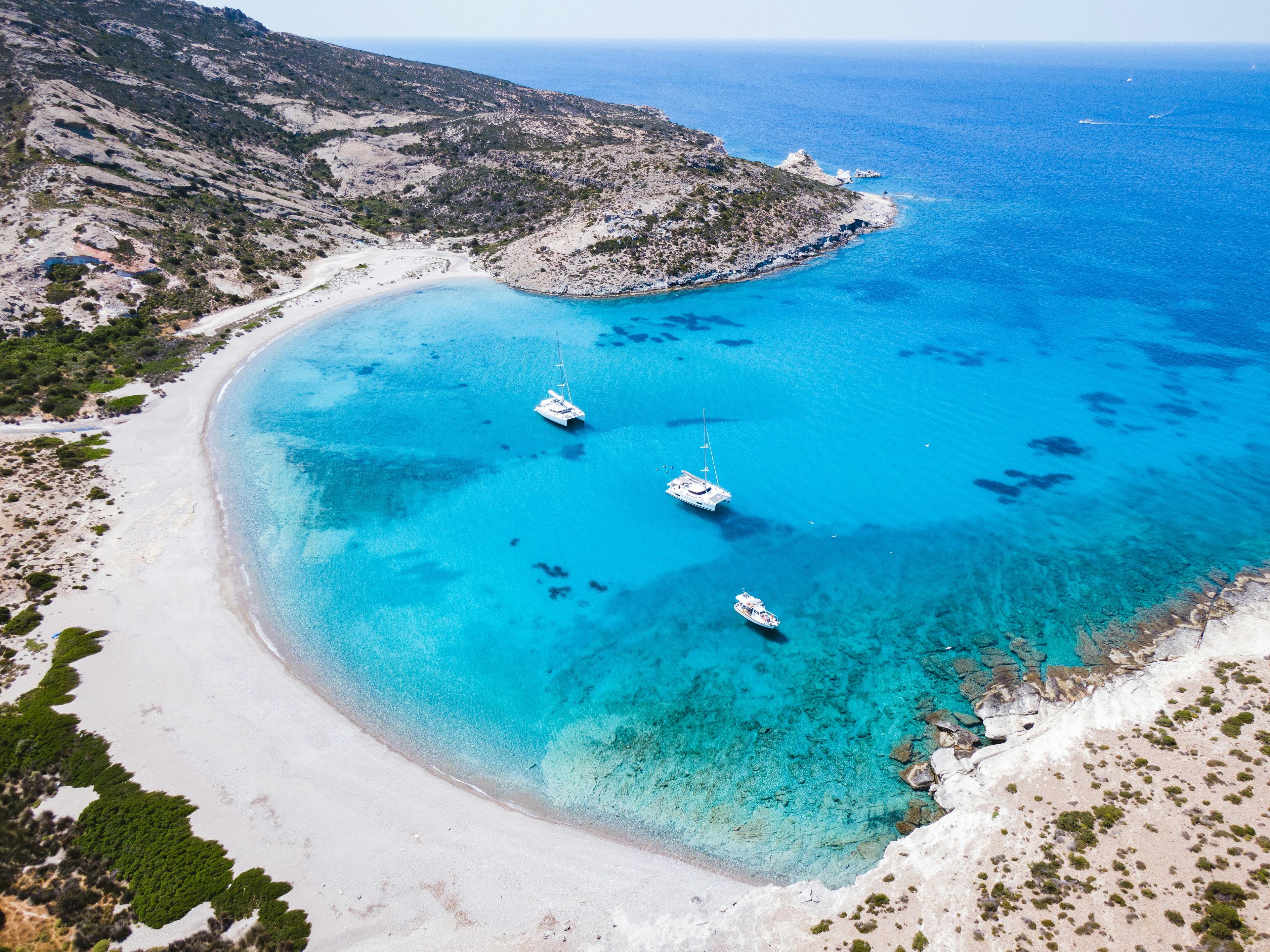There are many attractions near Komos Beach. The Komos Archaeological Site near Komos Beach is an important Minoan settlement and harbor dating back to around 2000 BCE. It served as a key port for the nearby palace of Phaistos, featuring large storage facilities, residential buildings, and evidence of extensive trade with the Aegean and Mediterranean regions. The site also includes religious structures and impressive megalithic architecture. Excavations have revealed pottery, artifacts, and architectural features, providing insights into Minoan life, trade, and culture in a scenic coastal setting. Tympaki is a small town and a center for agriculture in southern Crete, known for cultivating olives, vegetables, and greenhouse crops. Tympaki offers a glimpse into authentic Cretan life with its traditional cafes, local markets, and friendly atmosphere. The town hosts various local events and festivals, particularly during the summer, celebrating Cretan music, dance, and culinary traditions.
The Museum of Cretan Ethnology preserves and showcases the rich cultural heritage of Crete, focusing on the island's traditional lifestyle from the 19th and 20th centuries. The museum features a wide range of exhibits depicting the daily life, customs, and traditions of Cretans. It offers educational programs and workshops on traditional Cretan crafts, music, and dance, allowing visitors to engage actively with the island’s cultural heritage. Interestingly, the museum was recognized with the European Museum of the Year Award in 1992; it serves as a cultural hub for preserving and promoting the unique heritage of Crete. Agiofarago Gorge is a stunning natural gorge known for its dramatic rock formations, narrow passageways, rugged cliffs, and natural caves. It has a three-kilometer-long easy hiking trail that runs through the gorge, leading to the secluded Agiofarago Beach. Hikers will spot a small, picturesque Chapel of Saint Anthony, a Byzantine-era church built into the rock. If you are looking for another nearby attraction, Phaistos Palace is one of the most significant Minoan archaeological sites in Crete, located on a hill overlooking the Messara Plain. The palace was built around 1900 BCE and showcases impressive Minoan architecture, including multi-level courtyards, staircases, and a complex drainage system. The palace is famous for the Phaistos Disc, an undeciphered clay disc inscribed with mysterious symbols. Visitors can enjoy guided tours that provide insights into the history and significance of the fort, enhancing the visitor experience.





